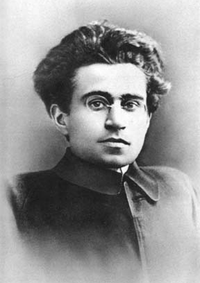
Photo from wikipedia
Neo-liberalism continues to expand its grip on education, despite fierce opposition. As an economic and political hegemony, neo-liberalism silences alternative viewpoints and neutralises resistance. Using an example of integrating Australian… Click to show full abstract
Neo-liberalism continues to expand its grip on education, despite fierce opposition. As an economic and political hegemony, neo-liberalism silences alternative viewpoints and neutralises resistance. Using an example of integrating Australian Indigenous pedagogy in early childhood initial teacher education, this article puts forward a typology for examining and evaluating various forms of resistant and counter-hegemonic endeavours. Taking a Gramscian perspective of hegemonic struggles as multifaceted and dynamic, the proposed model comprises three levels: practical, critical and political. Neo-liberalism has intricate linkages to the colonial past. The current domination of Northern theory expounds knowledge primarily from the industrial West in the Global North. In contrast, Indigenous knowledge from the marginalised Global South is envisioned as a counter-hegemonic force. Within this context, the authors illustrate how the proposed model could be used to evaluate resistant practices in the case of practising Australian Indigenous pedagogies of dadirri and yarning circles in early childhood initial teacher education.
Journal Title: Contemporary Issues in Early Childhood
Year Published: 2022
Link to full text (if available)
Share on Social Media: Sign Up to like & get
recommendations!